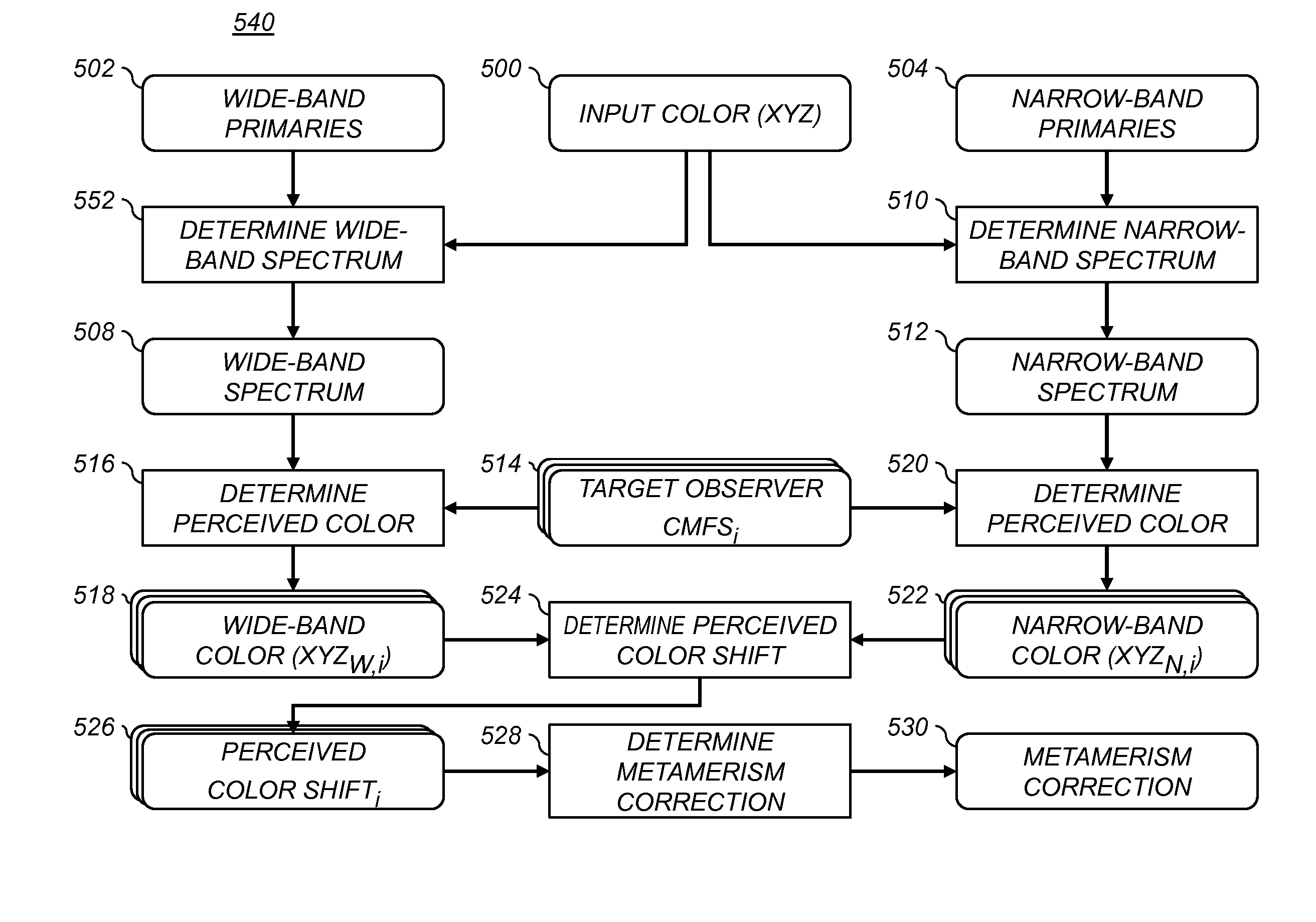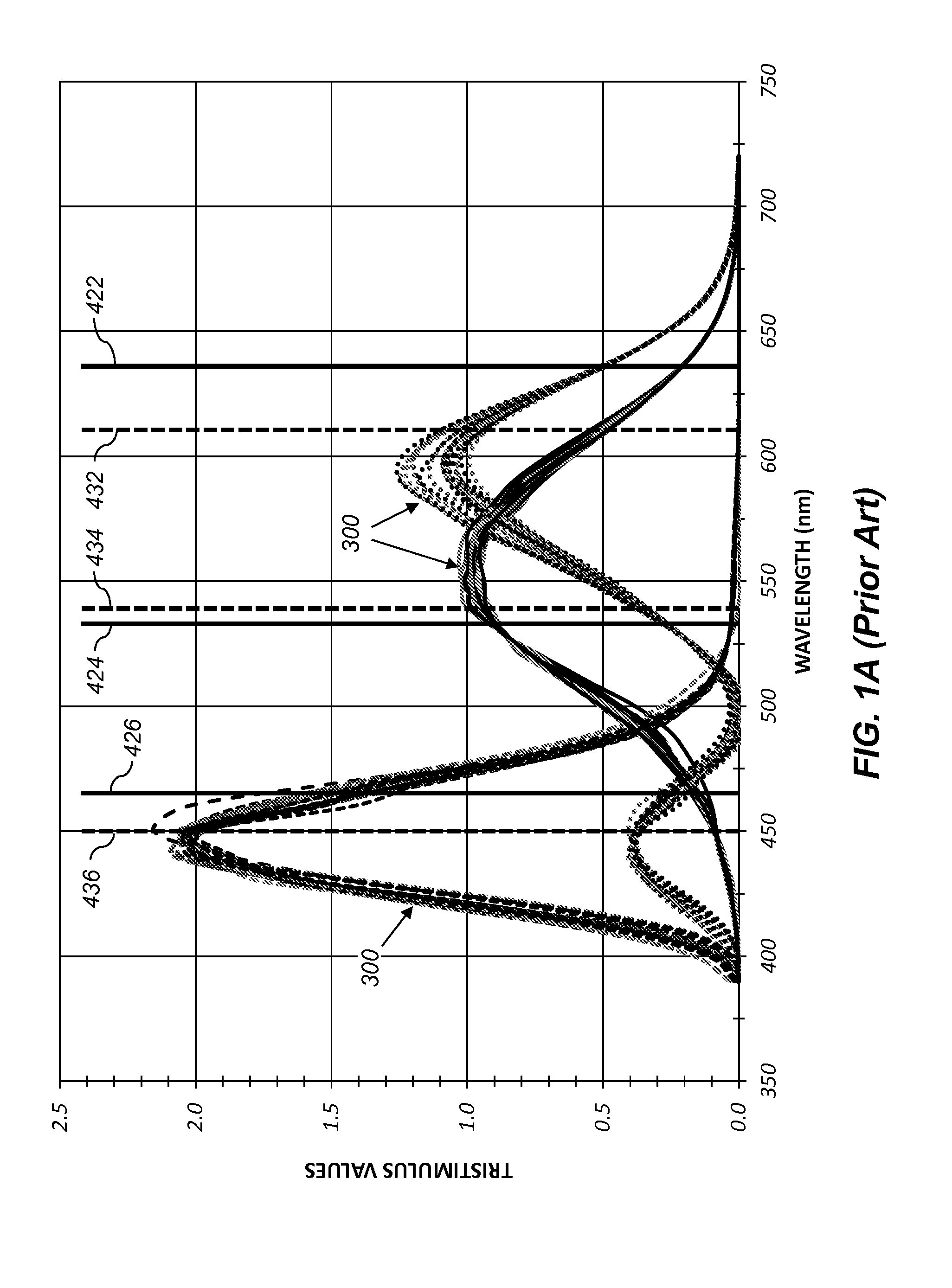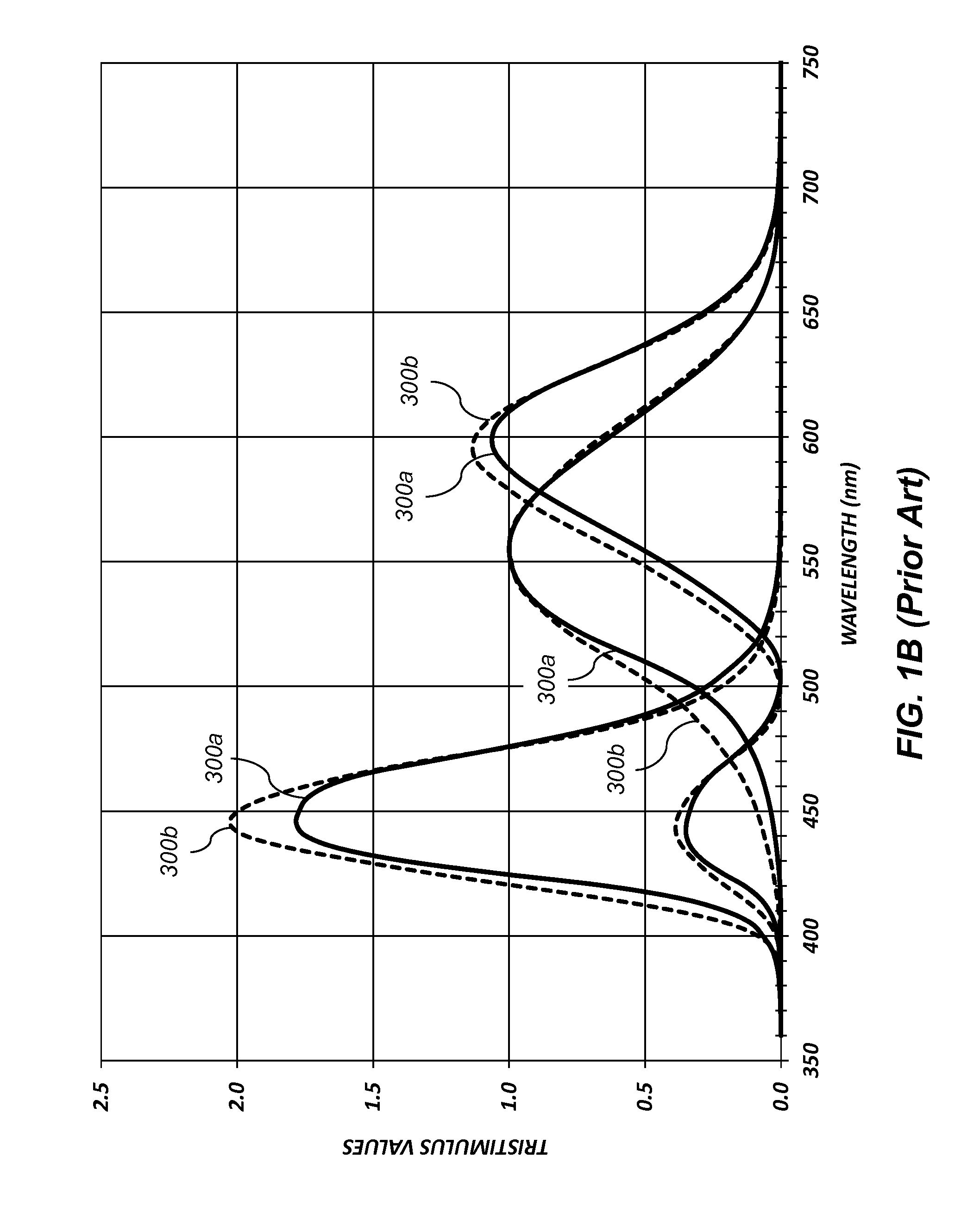Laser projection, whether for digital cinema, home projection, or other markets, has long been held back due to the cost and complexity of the
laser sources, particularly in the green and blue
spectral bands.
As one example, image displays with narrow-bandwidth light sources, including lasers, can suffer from observer metameric failure, such that individual viewers can perceive significantly different colors.
As can then be anticipated, there are various circumstances in which the spectral differences of a nominal metameric pair can lead to metameric failure, in which the expected color match is no longer perceived.
Observer metameric failure occurs because the optical system of the eyes, the color
receptor response, and neural
color processing varies among individuals.
As another example, illuminant metameric failure occurs when colors match under one
light source, but not another.
Field-size metameric failure occurs because the relative proportions of the three cone types in the
retina vary from the center to the periphery of the visual field.
Geometric metameric failure can occur when two samples match when viewed from one angle, but fail to match when viewed from a different angle.
However, such systems are complex, radiometrically inefficient, and sensitive to viewing angles.
Therefore they have never come into wide use.
As suggested previously, the phenomenon of metamerism, in which color matches occur despite spectral differences, is prone to failure.
Under normal circumstances, for example in
daylight viewing conditions, the most
common source of observer metameric failure is colorblindness (i.e., impaired
color vision) among one or more observers.
Systems (e.g., displays) that utilize narrow-band color primaries are most susceptible to observer metameric failure effects.
Therefore, it can be anticipated that viewers of
laser based displays, including digital
laser projectors, and other displays with
narrow spectrum primaries (such as LEDs), may experience observer metameric failure.
As a result, differences in color
perception among observers of such very saturated colors at or near the
gamut boundary may be hard to describe or quantify.
In the case of digital cinema, significant differences in color
perception among expert observers viewing content involving memory colors in a color suite or screening room, may lead to significant dissatisfaction.
In such settings, problems can also emerge when comparing the narrow-band or laser displays to a
broadband display that is an accepted standard.
Moreover, even if a group of expert observers are satisfied, some members of a broader audience may not be, and such experiences may lead to dissatisfaction that may ultimately affect marketplace success of a narrow-bandwidth display technology.
As a result, the
laser display and CCFL display, which lack
spectral color diversity due to narrow or multi-
modal spectra, have a high propensity to cause observer metameric failure.
However, Ramanath found that spectral distributions with moderate FWHM bandwidths (Δλ˜28 nm), such as LED illuminated displays, can still produce significant perceptible observer metameric failure, suggesting that reductions in observer metameric failure may not come quickly with increases in spectral bandwidth.
However, taken together, these two papers suggest that a three primary display having color spectra with preferential locations per Thornton, but moderate bandwidths (e.g., Δλ˜30 nm) will still exhibit significant metameric failure among observers.
This paper states that imaging systems having only three color signals as input (e.g. RGB values or L*a*b* values) cannot produce color reproductions that are precise for all human observers, as information is not available on how different observers perceive the original color.
That is, the
color vision response of the human
visual system for an observer cannot be directly measured to determine how the primaries can be optimized.
151-156, 2007), express concern about observer metameric failure occurring during the use of narrow-band primary displays, such as laser digital cinema projectors, causing consternation among filmmakers during “image proofing”.
While the method is successful at reducing observer metameric failure, it requires many additional channels (N>>3) of color information at the capture stage (multispectral capture), and increased complexity in
signal processing and display.
None of this additional complexity is readily compatible with the
image capture,
processing, and display infrastructure of today or of the foreseeable future.
While this approach might work for personalized
color processing or small groups of people, it would not be extensible to helping the random assemblage of people present in a cinematic audience.
In summary, while observer metameric failure has been identified as a problem that can affect display systems using narrow-band primaries, adequate solutions have not yet been suggested, particularly for displays having three primaries.
At the same time, compared with existing reference displays, metameric mismatches are more frequent.
Similarly, issues related to observer metameric failure in
laser projection displays have also been documented.
The solutions offered to date are either incomplete, or require larger numbers of primaries (N>3) that preferentially have much wider spectra than lasers have, or require observer color matched displays.
 Login to View More
Login to View More  Login to View More
Login to View More 


